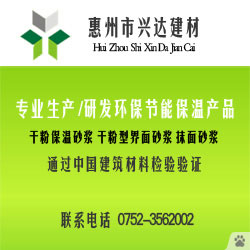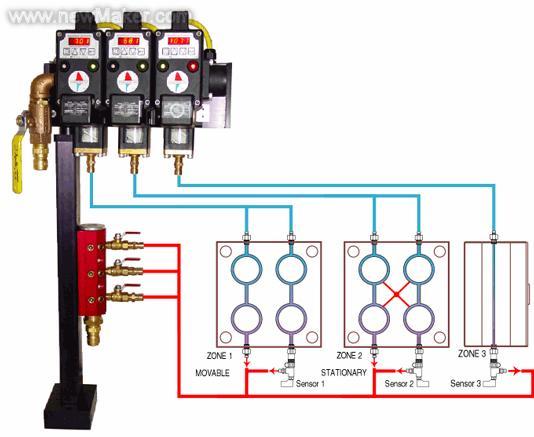MULTINATIONAL CORPORATION
luyued 发布于 2011-01-04 17:42 浏览 N 次
At the end of the 19th century, companies were following the capitalism entrance monopoly stage and the export of capital was developing greatly, According to Daft (2010:147) in developed capitalist nation there has appeared few large enterprises to begin to pass overseas to direct investments and to set up branch organizations and Sub-Companies. The ways include exporting, licensing, outsourcing and direct investing (DAFT, L 2010: 126). Thus all of those the ways lead to two or more countries economic entity which component, and engaged in production, sales and other business activities, and it is called multinational company (ZUIAWICK 1979:1). However, it is vital that how to make a transnational company survive successfully. Consequently, firstly this essay will discuss which is the suitable way to make a multinational company more successfully and in this part many examples will be used, such as Nokia, Motorola, Volkswagen and Hyundai Motor, and in the last the essay will draw a clearly conclusion.
Nowadays, in the course of expanding globally, whether to choose integration or localization strategy is difficulty which multinational corporations often encounter in theirs actual decision-making strategies. And this is also a focus of academic controversy on market in recently years.
On the one hand, take China for example, after 30 years since reform and opening-up, the sustained and rapid development of China's economy gained remarkable achievement, such as the from year 1980 to 2010 the GDP amount up to 382% (Unknown author, 2010) and become the world's third-largest economy. Whether in agricultural development, mechanical manufacturing or computer technology, China has achieved remarkable success, and moreover in software & hardware facilities aspect it is develops into relatively perfect. However, unique Chinese national conditions still lives. China is a large agricultural nation, the agriculture population up to three quarters and most people don't have received higher education. It was in this country appeared two mobile phone giants Nokia and Motorola.
Nokia sales in China are successful because it not only forms the global unification brand image and realized the simplistic of organization structure and achieved the procedural of management control (Donaldson, L 1996: 189), it shows Nokia opera as a tightly integrated worldwide business system, but also depend on Chinese specific national conditions Nokia was taken their business focuses on China's poorest regions. From 2009, China has almost one million agricultural populations signing used Nokia’s information service. And Nokia plan to launch a program called life tools service in China. Thus when most of the mobile phone manufacturer concerned smart phone, Nokia put his work focused on the traditional cell phone, this area is profit thinnest but the volume of usage is the most largest. Market research firm focusing analytics data shows, in the global 46 million cell phone users, two-thirds in developing countries, Nokia is a mobile phone leader in developing countries market, market share as much as 34 percent4(DU, Z. 2010). Nokia through received a lower commission from farmers and to provided important agriculture price information for farmers, Nokia has achieved the business and humanitarian goals and attract a new generation of mobile phone users (especially in China)3(ZHAN, H. 2010). Hence, the achievements due to Nokia operate not only as a tightly integrated worldwide business system but also effective to let each national subsidiary operate autonomously.
Compared with the Motorola who has to enter the Chinese market two years early than Nokia, while the market share of Motorola in China has less than Nokia’s, for the reasons are that Motorola have not understand Chinese market and the Chinese consumers. From the GSM era begins, Motorola had been pay attention to technology and had made its technology cost relatively higher than Nokia’s. It's definitely a blow for purpose of more than 70 percent of the phone low-end users. More importantly, Motorola lack of innovation in China and this is a bad news for the young generation users, and relative to Nokia, almost every year Nokia has launched a new cell phone in China (such as year 2010, Nokia N8-00; year 2009, N97; year 2008, N82; year 2007, N93i, etc) which the product not only had brought profits for Nokia, but also had catered to consumer tastes. In policy aspect, Nokia widely cooperated with Chinese state-owned enterprises, such as Nokia and China Mobile in 2010 proposed "Cooperation and win-win" slogan and “MM-Ovi” shop4(DU, Z. 2010), however, in Motorola there has rarely can appear this situation. It means that Motorola fail to make each national subsidiary operate autonomously. All of those lead to that the Motorola market share in China less than Nokia’s and Motorola also failure in China.
On the other hand, take Volkswagen for example Volkswagen Corporation group strategy determines the strategic planning of subsidiary companies in China, this action shows that the company operate as a tightly integrated worldwide business system. Generally, Volkswagen’s car manufacturer is the earliest group to enter the Chinese market and the main consideration of Volkswagen into Chinese market is that it hopes occupied the huge potential market in China. In addition to the parent company's strategic preparation, the subsidiary in China was insists on the tenet of "user wishes above all" as their business purposes. Because Chinese manufacturing technology level was very low and the people's living standard was still backward, therefore, the users first concern were that whether the car that they bought was practicability and cost-effective. Considered these, Volkswagen based on China most ordinary people wish as the key point to produced cars so as to ordinary people can offered it, for example the Johan Santana.
In order to satisfy the user’s desire, production and sales the cheap and practical products, Shanghai Volkswagen as far as possible to made their products cheaper and leave no stone unturned to improved localization rate, reduced cost, and reduced prices. However due to the Chinese car industry technical level was backward and the state industrial policies were uncertainty, all of those have kept China Volkswagen actively communication with the Chinese government, in order to minimize the number of policy risk. In addition, Shanghai Volkswagen also actively trained local person and constructed development team.
Because of Shanghai Volkswagen knew clearly about Chinese user’s desire and needs, and coupled with their untiring efforts, made the share of Volkswagen industry up to a heavier percentage in China. It shows that the enterprise effective to let each national subsidiary operate autonomously.
While South Korean Hyundai Motor sales was indeed a flash in the pan in South Africa. Before 2000, Hyundai Motor group once all-powerful in South Africa and the people of South Africa’s having had the Hyundai Motor close to 100,000. Is this glorious enterprise, they have encountered Waterloo after in the year of 2000. According to the statistics in South Africa manufacturers association, actually, Hyundai Motor group has been in liabilities operations. In the year of 2000, Hyundai Motor group in South Africa's agent owe as high as 77 million rand.
Analysis the failure of Hyundai Motor group overseas investment, this is mainly due to the CEO has made a misjudgment about the market. South African infrastructure is advanced and the major world automobile manufacturers regarded South Africa market as a potential market and launched fierce competition to scramble for the market. Hyundai Motor group was into South Africa market late, but the parent company has spent much money to do advertising and in Botswana has established an assembly plant as exclusively place to supply South Africa Motor market.
However, South African market was limited and after all, people can afford a car were minority, moreover domestic demand is very recession, so that the car market soon appeared weak and Hyundai’s car sales began falling. What’s more the disadvantage is that two years ago South Africa has changed lower tariffs policy and improve the bank credit rates, all of those causes the spending soared, so Hyundai Motor group sold the more car they lost more. On the other hand, by the impact of the Asian financial crisis, Hyundai Motor Corporation managed difficulty in South Korea in recent years and therefore the enterprise had not given a good protection for its subsidiaries in South Africa and only had let its subsidiaries to bankruptcy5 (Unknown author 2002). Those indicate that the firm not effective to let each national subsidiary operate autonomously.
To sum up, the environment for today’s organizations has therefore become extremely competitive and highly complex, so the difficulties and risks of a borderless world are matched by benefits and opportunities (DAFT, L 2010:123). A maturity company not only to make themselves behaviors accord with the international standard, but also it can depend on the different areas situation to design their plan and strategy. In other words, company must realize internationalization and localization combination. Only make those both in balance, enterprise can more easily to survival in the fierce international competition, exactly as Nokia and Shanghai Volkswagen.
Reference:
DAFT, R. KENDRICK, M. and VERSHININA, N. (2010) Management: International Edition. United Kingdom: Thomas Rennie.
DU, Z. (2010) Nokia cooperate with China Mobile. China: IT’S Newspaper. Available from: http://www.enet.com.cn/article/2010/0811/A20100811706965.shtml and http://tech.163.com/mobile/10/0324/05/62H2OM4Q00112K8U.html [Accessed Nov 2, 2010]
Donaldson, L (1996) For Positivist Organization Theory. Great Britain: Sage.
SHI, Z M (2002)Multinational companies localization strategy - causes and theoretical study. China: Tsinghua.
Unknown author (2002) Analysis: Hyundai Motor Corporation. China: Doc in.
Available from: http://www.docin.com/p-2331807.html [Accessed Nov 4, 2010]
ZUIAWICKI, L. (1979) Multinational Enterprise in West and East. Netherlands: Sijthoff & Noordhoff.
ZHAN, H. (2010) Nokia turn to rural market and will provide "life tool" service. China: Tencent. Available from: http://tech.qq.com/a/20101102/000231.htm [Accessed Nov 2, 2010]
- 06-21· 爱可视605WIFI暑促!购机还送
- 06-21· 疯狂降价1200元爱可视404
- 06-11· Ellen呼吁粉丝协力阻止捕杀
- 06-11· 【引用】『八卦』未来英
- 06-10· 升级Android 2.2!爱可视101评
- 06-10· 爱可视环球首发5款Androi
- 06-09· 台湾母子3人因贫病交迫中
- 06-09· Genetically modified tobacco co
- 06-09· 英国《独立报》:中国女演
- 06-09· Rascal Flatts - Summer Nights (
- 06-09· 收音机厂商(22)
- 06-08· 问板终极贴【2009年6月20日
- 06-08· 爱可视平板电脑新品 让你
- 06-08· 升级Android2.2!爱可视101平板
- 06-08· 法国爱可视推出限量版上
- 06-08· 高清之王爱可视AV530仅售
- 06-08· ARCHOS-605 爱可视--30GB-触摸
- 06-08· [转载]【原创】爱可视10
- 06-07· c++标准库中endl的实现(转
- 06-07· 单指令多数据的程序优化




![[原创]爱可视,因你而精彩](http://www.okpinpai.net/uploads/userup/3/142199037279.jpg)





